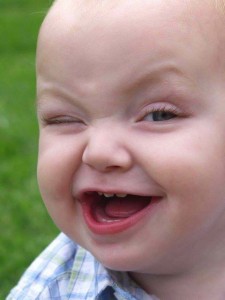Let’s pretend that a mewling, pooping annoying small thing is deposited in your lap. It needs constant input from you. Before long, it’s taken over your life. You find yourself lavishing attention on this new creature. Going out is a distant memory. But the thing is, the new baby is cute. Really cute. You can’t help but feel protective. You want to look after it.
But why? Why do small helpless things – babies, kittens, puppies, pandas in baby form – turn even the most cynical human into a helpless wreck? Why don’t we have the same reaction to a baby lizard or fish or bird? What, in short, is this cuteness thing all about? It turns out that the science of cute is far more interesting than you’d think. Cuteness is evolution’s devious way of getting you to look after your offspring. Human babies – unlike many other species – are totally dependent on their parents for years after their birth. And you’d find it hard to overlook the constant interruptions to your life if babies weren’t so darn cute.
Zoologist Konrad Loranz argued way back in 1949 that the typical baby face – big eyes, heads large in comparison to their bodies and small noses – turned adults into happy baby-tending machines. More recently, researchers found that babies perceived as more cute made parents more willing to drop everything and look after them. Clever trick, babies.
So why does that transfer to animals? Well, it turns out our brains latch on to pretty much anything with the same criteria. Kittens: big eyes, large heads, small noses. Baby pandas: ditto. Puppies: yep. That might even be one reason why domestic dogs and cats look quite different to their wild ancestors – we’ve bred the cute into them.
Environmental charities know how cute works. Baby harp seals = cute. Clubbing them to death therefore = bad. But fish are not cute. Cows and sheep are not cute (but we often feel guilty about eating their cute babies). That means that when a charity wants to protect an area, they use the fluffiest, most hapless animal they can find on the endangered list.
For absolute and categorical proof that cuteness is biological, we need to turn to Japan, the world’s first superpower of oddities, where kawaii (cuteness) culture has reigned unchallenged since Hello Kitty took her first faltering steps in 1974. In Japan, any megacompany worth its salt has a cute animal mascot. Just look at these pioneering cute toys. But it’s in cartoon culture that we see cuteness taken to the extreme. The girls of anime and manga are cute. Really cute. Small noses, vast limpid eyes, large heads. So it’s no wonder that Japan’s legions of male otaku geeks are besotted with them – often to the point where real girls just don’t match up. It’s hard to compete with a cartoon (take a look), but Japanese girls give it a red-hot crack, making their voices higher and adopting a variety of cuteification techniques such as expert giggling and dressing like schoolgirls.
Of course, babies get less cute as they get older. Their bodies grow in proportion to their heads. Their eyes seem less huge. They gain co-ordination. But by then, evolution’s work is done. It’s a trick – but it’s a good one.

Leave a Reply
You must be logged in to post a comment.